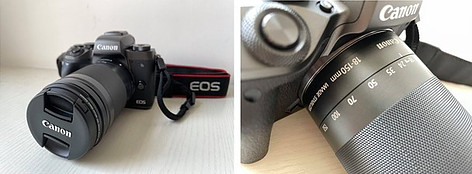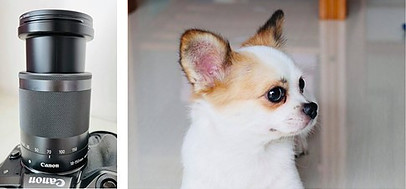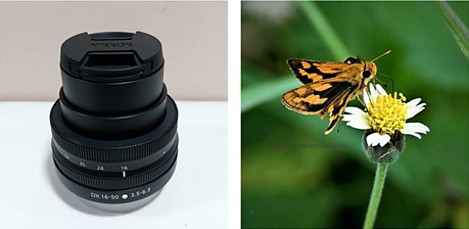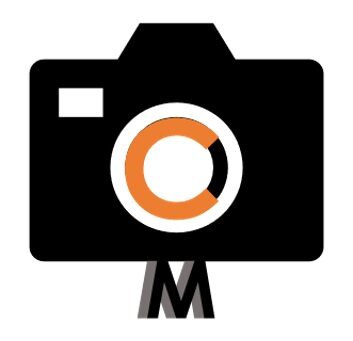In my previous articles we tackled the definition of Mirrorless Camera and how it works. We also named some top rated mirrorless cameras. This time, we will discuss about mirrorless camera lenses.
We are already aware that all mirrorless cameras can support interchangeable lens depending on the structure or system the camera was designed. For example, if the mirrorless camera uses micro four thirds lens mount you can then take full advantage of the many mirrorless camera lenses available for micro four thirds system regardless of the brand because they are all compatible!
Notwithstanding, as for some manufacturers or brands who uses their own lens mount system hence, you can only avail of their other lenses for that particular brand of mirrorless cameras!
There are many types of lenses out there and it would be very important to learn the basics in order to have a better judgment when it’s time for you to dive-in and go trading lenses to satisfy your own expectations!
Understanding What Is Kit Lens
“Kit lens” is the original lens that comes along when you first purchase a camera. Normally these are the cheaper types of bundled lenses to address camera’s affordability for beginners.
Depending on the manufacturers and retailers, some mirrorless cameras may already are offering superior kit lens’s that could actually fit to your present need without having to immediately change lens or add another lens to your wish list!

As an example, below is my own Canon EOS M5 that I bought with zoom lens as the kit lens which was exactly what I’m looking. This answered my current need of wanting to have only one lens to carry. The lens focal length can be adjusted from 18mm (for wide-angle photograph) to 150mm (for telephoto photograph).
Understanding Prime Lens and Zoom Lens
These two lenses most of the time comes as a kit lens (there maybe times that it could only be the prime lens or the zoom lens only or a combination of both prime lens + zoom lens). It all depends on the manufacturer’s and retailer’s offerings.
- Prime Lens
- Technically speaking prime lens is a lens with only one focal length or fixed focal length (FFL).
- It could also mean your “primary” lens (out of many lenses that you own it is that one unique lens that you always carry to shoot photographs).
- Perform better in low light settings
- Zoom Lens
- In simple term the word “zoom” basically means you can change focal length.
- Zoom lens has a zoom ring that allows you to adjust the focal lengths for a variety of desired shots.
- Zoom lens is ideal for taking pictures from a distance.
- Normally image quality at low light settings is not as good as that of the prime lenses.
Difference Between Telephoto Lens And Zoom Lens
These two lenses are commonly mistaken for being the same but they are not identical. Below definition explains some differences in usage and terminology.
- Telephoto Lens
- Commonly referred to as lens with a long focal length- meaning it has longer reach.
- Lens is considered a telephoto starting from 60mm and longer.
- Medium telephoto lenses generally comes with focal lengths of 70mm-200mm
- Super telephoto lenses are 300mm and beyond.
- Telephoto lenses can either be a prime lens or a zoom lens.
- Telephoto lenses are best used for wildlife and sports photography (as you need to stay far away from your subject).

- Zoom Lens
- As already mentioned previously, zoom lens has a ring which allows you to adjust the focal lengths for a variety of desired shots (wide-angle and telephoto photographs).
- Zoom lens is ideal for taking pictures from a distance zooming in your subject to bring it closer and bigger.
- Example of zoom lens is 18mm – 150mm (below sample photo taken by my own Canon EOS M5 mirrorless camera)

What Is A Wide Angle Lens?
Wide angle-lens has a wider field of view!
It has a smaller focal length than the *normal lens. Basically it can include a lot of desirable and undesirable elements in your image composition as it covers wider angles.
If you have a zoom lens, set the focal length to the smallest number. While for prime wide-angle lenses adjustment is not necessary as it has only one (fixed) focal length as already mentioned earlier.
Wide angle-lens is ideal for taking “landscape” images while it is not suggested for portrait photography as you will get a distorted image (*for portrait setting, it is suggested to set your focal length at 50mm if you have a zoom lens).

Below sample image taken by my own Canon EOS M5 mirrorless camera at 18mm wide-angle setting.
*Normal lens: Also known as “standard lens” is considered to have a focal length of 50mm as it is the closest match to what appears to the naked eye or what the human eye can directly see. Moreover, focal lengths between 40mm-58mm is also considered as normal as it also looks natural to the human eye.
What Is A Macro Lens?
Macro lens is a special type of lens that can take images at a very close distance (minimum of about 30cm). It has the ability to focus and create a detailed or very sharp image even of a tiny subject.
Most new lenses whether prime lens or zoom lens are all now capable of shooting macro images! Macro lenses are most widely used for taking close up images of insects, flowers, foods, small item products such as jewelries, etc.
Macro lenses are also considered to be good for portrait photography. So basically macro lenses are not just limited to taking close up photographs but also almost all kinds of setting conditions and moments that needs to be captured!
Below sample photo was taken by my brother’s Nikon Z50 that is a macro compatible lens.

Other Types of Special Lenses
We already have defined the basic lenses that are widely and commonly used in mirrorless cameras. But there are a lot more when it comes to camera lenses. Some lens’s are specially designed for a particular setting or condition to achieve the best image possible according to it’s purpose.
Below are some of special lenses that are popular to all camera enthusiasts and professionals.
- Pancake Lens
- By the name itself pancake lens is thin, slim and lightweight. It is also affordable aside from it’s size benefits.
- Ideal for travel or everyday shooting considering you can easily insert your compact mirrorless camera in your pocket
- Pancake lenses are basically wide-angle lens.
- Perform better in low light settings.
- Lens for Low Light Condition
- Low light lens are lenses with fast aperture. In simple term, aperture is the window or opening on the lens diaphragm for the light to pass through. The bigger the aperture the faster the lens will become.
- The amount of light that the aperture allows into the lens is called f/stop. The lower the number of f/stop the bigger opening of the aperture will be which is why it is the ideal lens (lower f/stop) for night photography and low light conditions or settings.
- Ideally f/2.8 or greater (greater means with lower f/stops- ex. f/2.0, f/1.8, f/1.4) will have best results when shooting at night or in low light setting with good quality image.
- Low light lenses are normally expensive compared to other lenses with higher f/stops.
There are many more special lenses built for a particular function say for example lenses for moving objects, waterproof lenses, etc. However, I will be discussing that in a separate article.
At the moment, we have defined and understand the basics about the most commonly used lenses in mirrorless cameras!
What Makes a Lens a Good Lens? And Is It The Right Lens?
As I have explained above,a good lens would be the lens that can capture good quality image at normal condition as well as in an unsuitable condition or settings such at night and low light situations!
But just like what I’ve said in my previous article, we cannot find all the good elements in one product alone. There will be always a trade off in performance and functionality unless of course we are willing to pay a hefty price tag.
For beginners, kit lens will be enough as you learn to compose good quality images. As you improve on your photography skills and when you are ready then you can trade lenses to suit your current needs.
Based from my own experience, my first mirrorless camera was an entry level Lumix GF2 with kit lens 24mm-50mm. I’ve used it for several years learning how to shoot then as my need changes I have traded it and bought second hand wide angle lens with lower f/stop (f/2.8) and a zoom lens 45mm-200mm and as expected it comes with higher f/stop.


